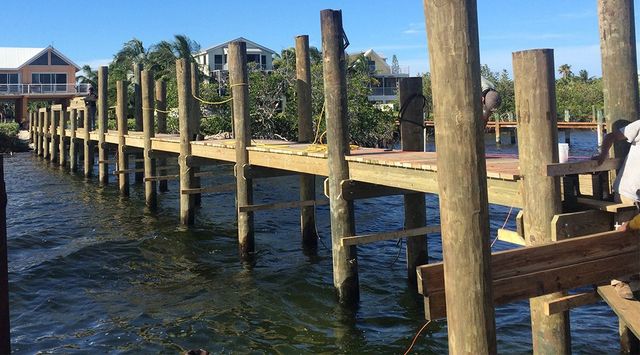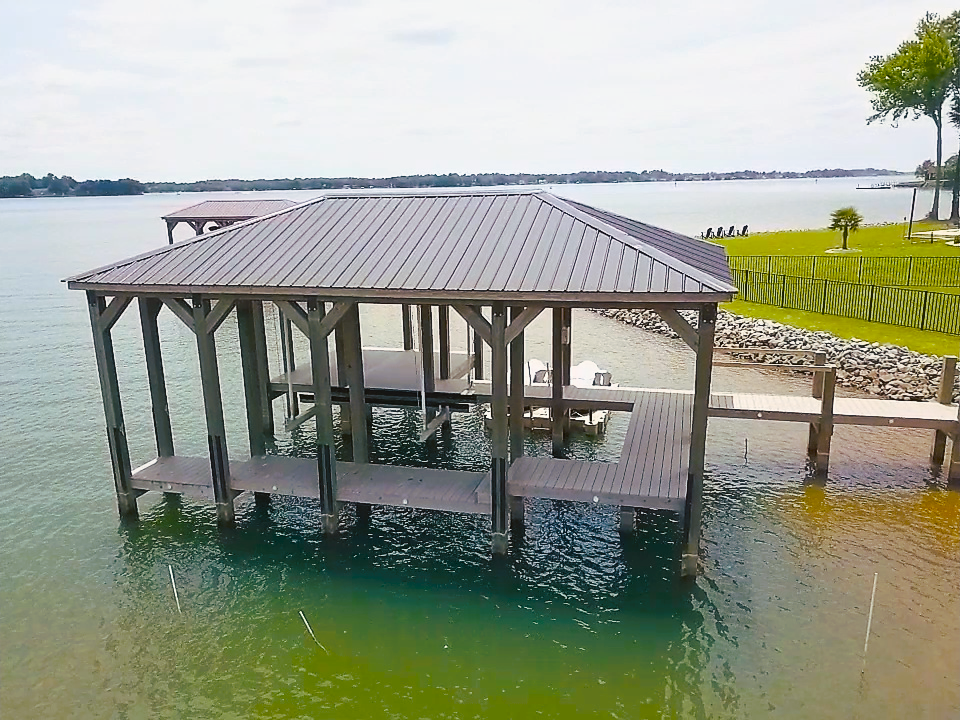DIY Tips for Simple Dock Repairs You Can Handle
DIY Tips for Simple Dock Repairs You Can Handle
Blog Article
How to Address Common Dock Repair Service Issues for Safe Water Tasks

Identifying Common Dock Issues
Identifying typical dock issues is crucial for maintaining the capability and safety of your beachfront property. Regular examinations can help uncover problems before they become serious, ensuring both the longevity of the dock and the security of those that use it.
An additional typical trouble is the deterioration of flotation protection devices. These gadgets are important for maintaining the dock buoyant, and any type of damages or slits can create the dock to listing or sink. Frequently looking for leaks or water logged drifts can preempt more substantial issues.
Furthermore, algae and barnacle accumulation on the dock's surface can develop unsafe and hazardous problems. This biofouling not just poses a danger to customers however can likewise increase the wear and tear of the dock products.
Last but not least, examining for indicators of rust on metal elements is necessary. Rust can jeopardize the integrity of the dock's framework, making it hazardous. By routinely identifying these typical dock issues, you can guarantee that your dock remains useful and secure for many years to find.
Fixing Rotting Timber
When resolving the issue of decaying timber on your dock, it is vital to act quickly to avoid more deterioration. Begin by thoroughly examining the entire structure to recognize all impacted locations. Use a screwdriver to probe the timber; if it sinks in conveniently, the wood is most likely deteriorated and needs immediate attention.
When recognized, remove the decomposed sections making use of a saw or carve. Be certain to cut down to healthy, solid timber, guaranteeing you eliminate all jeopardized product. After removal, treat the continuing to be timber with a timber preservative to stop future rot. This therapy will assist safeguard against wetness, which is the key reason for wood decay.
Following, replace the eliminated areas with marine-grade lumber or pressure-treated wood, which are much more immune to water damages. Secure the brand-new pieces with stainless-steel or galvanized bolts to stop corrosion. Additionally, applying a waterproof sealant to the new wood can offer an additional layer of security.
Protecting Loosened Boards
Just how do you guarantee your dock continues to be secure and practical for all its customers? One essential aspect is safeguarding loose boards, which can otherwise posture significant hazards. Loose boards not only boost the threat of tripping however can additionally compromise the architectural stability of the entire dock.

For reinstallation, use stainless or galvanized steel screws, as these products use premium resistance to deterioration in aquatic atmospheres. Guarantee the screws are long sufficient to penetrate deep into the underlying assistance framework, but not as long that they protrude through the dock's surface. Pre-drilling pilot openings can assist avoid the wood from splitting.
Lastly, maintain a normal examination timetable to recognize and resolve any kind of new problems quickly. By protecting loose boards effectively, you add to the overall security and durability of your dock, making it a trustworthy system for water tasks.
Stabilizing Unsteady Pilings
Making sure the stability of unsteady pilings is critical to keeping a safe and useful dock. Unstable pilings can compromise the entire framework, positioning significant threats to individuals and potentially causing costly fixings. The very first step in supporting these important parts is a detailed examination. Check out the pilings for indicators of rot, damages, or shifting. Use a level to look for vertical positioning and guarantee they are driven deep enough right into the substratum to give ample support.
If the pilings are located to be unsteady, one effective method for reinforcement is the use of added bracing. Cross-bracing with treated lumber or galvanized steel can considerably boost stability. Anchor the dental braces safely to both the pilings and the dock structure to distribute tons uniformly.

Routine maintenance and routine review of the pilings' stability are important to guaranteeing long-term dock safety and functionality.
Changing Rusty Equipment
Attending to unsteady pilings is just one facet of preserving a dock's integrity; an additional vital problem is replacing rustic hardware. In time, direct exposure to wetness and salt can lead to the linked here oxidation and deterioration of bolts, braces, and screws, jeopardizing the whole structure's safety. Normal assessment for rust is essential, specifically after serious weather or seasonal adjustments.
When rustic hardware is recognized, immediate activity is needed. Begin by selecting marine-grade stainless-steel Homepage or galvanized equipment, both made to resist the extreme aquatic environment. Make sure that you have the ideal tools, such as screwdrivers and wrenches, to securely remove the old, corroded pieces without triggering more damage to the dock.
After eliminating the corroded hardware, completely tidy the affected areas to remove any recurring rust or particles. Apply a rust-inhibiting guide to exposed metal surface areas prior to installing the new equipment. Tighten up all components securely to avoid future helping to loosen, and occasionally check the fittings to ensure ongoing security.
Changing corroded hardware not just extends the dock's lifespan but likewise substantially boosts the safety and security of water activities. By proactively managing corrosion, you safeguard both the structure and its users, making certain a secure and delightful waterside experience.
Conclusion
Routine examinations and upkeep are important to attend to common dock fixing problems and ensure risk-free water activities. Such proactive actions add to the total security and capability of dock structures, cultivating a safe setting for water-based tasks.
Making sure the security of water activities pivots substantially on the proper maintenance and repair of anchors (Dock Repairs). These gadgets are crucial for keeping the dock resilient, and any damage or slits can trigger the dock to list or sink. By consistently identifying these typical dock issues, you can make certain that your dock stays safe and functional for years to come
Making sure the stability of unstable pilings is vital to maintaining a secure and useful dock.Normal inspections and upkeep are important to deal with common dock repair problems and guarantee safe water activities.
Report this page